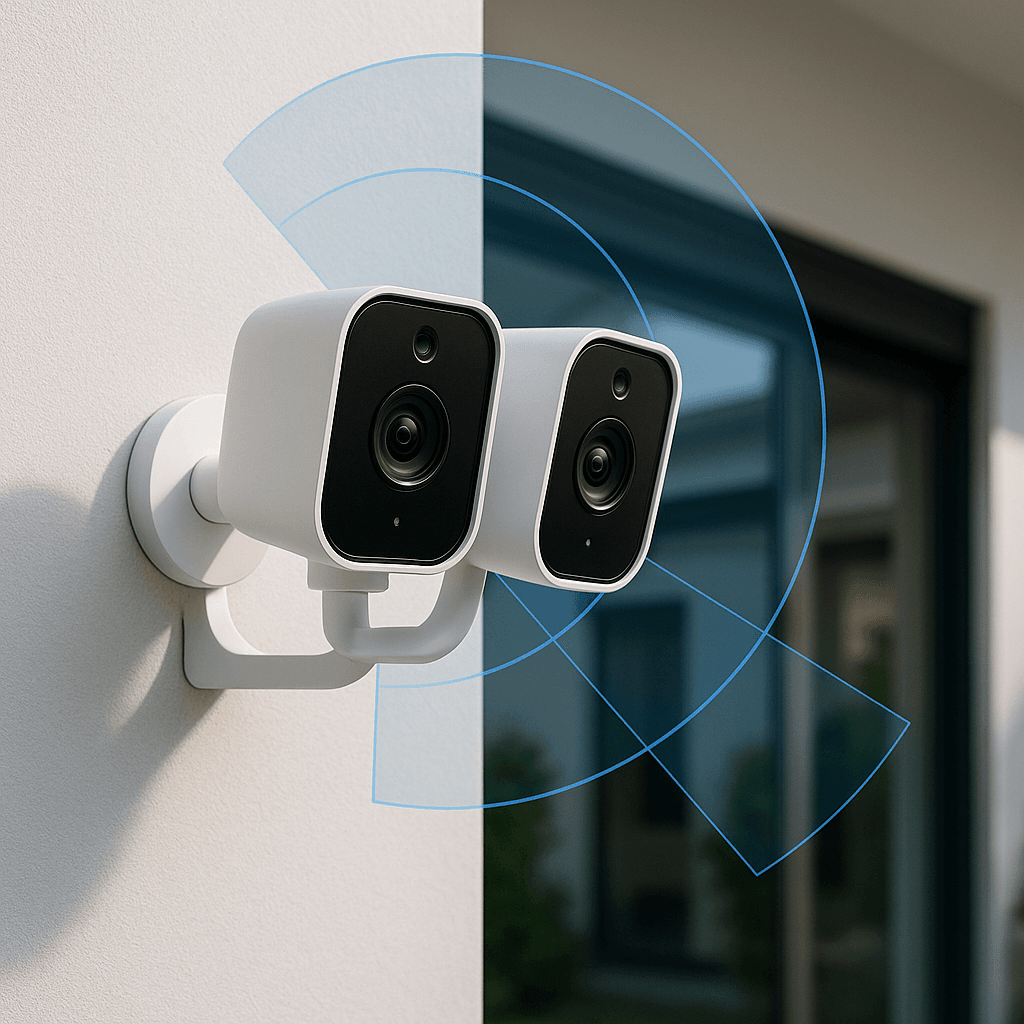Amazon's budget security brand Blink just unveiled the Arc, a cleverly simple $20 accessory that merges two camera feeds into a seamless 180-degree view. Born from kitchen-table experimentation and perfected in just 60 days, the Arc eliminates blind spots that plague traditional pan-tilt cameras while keeping costs surprisingly low.
Amazon's Blink team just solved one of home security's most annoying problems with what started as a kitchen counter science project. The new Blink Arc accessory transforms two separate cameras into a single 180-degree surveillance system, eliminating the blind spots that make traditional pan-tilt cameras vulnerable to the classic "Mission Impossible duck-and-dodge" scenario.
"There's this fatal flaw with pan/tilt cameras," Jonathan Cohn, head of product at Blink, told Wired at Amazon's fall hardware event. "The cliché Mission Impossible scene, where they wait for the motorized pan/tilt to turn the other way and duck behind."
Cohn's solution emerged from pure DIY ingenuity. Working in his kitchen with snap mounts, hot glue, and a borrowed 3D printer from his kid, he cobbled together the first prototype in just weeks. The challenge was getting the angle just right so someone walking out of frame on one camera would seamlessly appear in the adjacent camera's view.
The breakthrough came when Blink's computer vision team figured out how to "dewarp" the stitched video feeds, creating what looks like a single, fluid 180-degree surveillance stream. AI tools handle the video stitching automatically through the Blink app - users simply designate cameras as "left" and "right" and get panoramic coverage.
What makes the Arc particularly clever is its compatibility with existing hardware. Current Blink Mini 2 owners can grab the $20 Arc mount and instantly upgrade their setup. The accessory houses two cameras at precisely the right angle and connects to a single outdoor power supply, with mounting options for horizontal, vertical, or eave installation.
The Arc launches alongside two new camera models - the Mini 2K+ and Outdoor 2K+ - that bump resolution from 1080p to 2K. But according to both Cohn and Jamie Simonoff, Ring's founder who now leads Amazon's home security division, the resolution upgrade isn't really about what you see on your phone screen.
"You may not notice a huge difference between 1080p and 2K on your phone screen, but it gives AI more data to analyze," Simonoff explained during the event. The extra pixels feed machine learning algorithms that reduce false alerts, summarize video clips, and curate highlight reels through features like Blink Moments.












